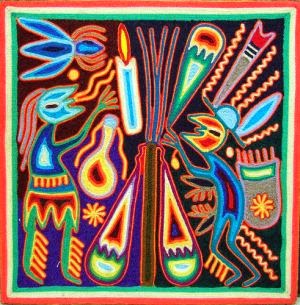 |
| From praxisucc.com |
The laying on of hands is an ancient technique for helping people feel better. From the simple caress of a mother's hand on a feverish brow, to full-on faith healers, touch is one of the major ways we can communicate healing to each other. In the Judeo-christian tradition, the purpose behind the laying on of hands was, and still is, to confer a blessing from God. In medieval Europe, Kings supposedly had the power to cure through their touch. In one form or another, touch has long been a remedy for human pain and suffering. We can easily see touch used all over the animal kingdom, as a form of communication, comfort, and play.
In traditional forms of medical practice, such as Oriental medicine, Ayurveda, Curanderismo, Shamanism, and traditional forms of folk medicine, manual therapy, that is, touch through massage, manipulation, or energy work, is an integral piece of any treatment. It is one of the ways that the practitioner listens to the client. We can listen not only with ears, but with eyes (observing movement, posture, attitude, tone), and we can strongly and quietly listen through our hands. I have found that many times, the body will begin to respond through the mere act of being heard.
Introducing Minimal Movement Therapy
The name comes from the aspect of the work that I have developed in my own practice, particularly as I worked with elderly and fragile clients. I noticed that when I place my hands gently on two places of the body, generally at either side of one of the diaphragms or along a large muscle group, that the body may spontaneously unwind or relax. This is not new news: as I said above, the technique is ancient. More recently, Barrett Dorko, a physical therapist from Ohio, has been teaching this as "Simple Contact" and he discovered it the same way I did -- through increasing palpatory sensitivity over the 40 years of his clinical practice. He comes at it from a neuro-physiological standpoint, and I came to it through my understanding of the body's energies, but in the end, I believe all therapists are after the same thing: we all want our clients to have improved feelings of health and well-being.
This technique is excellent for re-introducing touch to people who have been hurt by vigorous massage techniques, who are medically fragile, or in a lot of pain. It is softly reassuring to clients who have bad experiences with touch. It is non-invasive and yet highly attentive. It is listening to the client on the deepest, non-verbal level, and allowing their body to re-equilibrate gently and without force. By engaging the brain and nervous system on a different level, we can facilitate a change or shift in ways that are supportive, comfortable, compassionate, and energetically neutral.
Is it different than any other therapy?
Minimal Movement Therapy combines knowledge of physical anatomy with sensitive touch, visualization, breath work, intention, patience, and communication with the client at many levels. It comes from a basis in polarity therapy, combined with craniosacral work, myofascial release, neuromuscular therapy, and good old massage work. I see MMT as a technique that would be used as part of an integrative whole-body treatment.
The paradox of healing is that although a person may consciously choose to make the appointment and come in for sessions, the unconscious mind may strongly resist the work. Even if making a change would feel good or beneficial in other ways, the deep-rooted fears of change can sabotage progress in bodywork. I strongly admire anyone who makes the choice to get on my table and allow themselves to open up to the vulnerability of receiving bodywork. It can be a hugely courageous act.
Minimal Movement Therapy seeks to address this by holding neutral and compassionate space for the client to proceed, both physically and non-physically. By allowing the body to unwind in its own way and at its own pace, the client feels unhurried. There is no rush to perform, no "gold standard" of measured improvement. What arises for the client as they go through the work can be key for that person to developing their own self-awareness. The body is an excellent barometer of how we are responding to life: we just need to learn how to read it.

